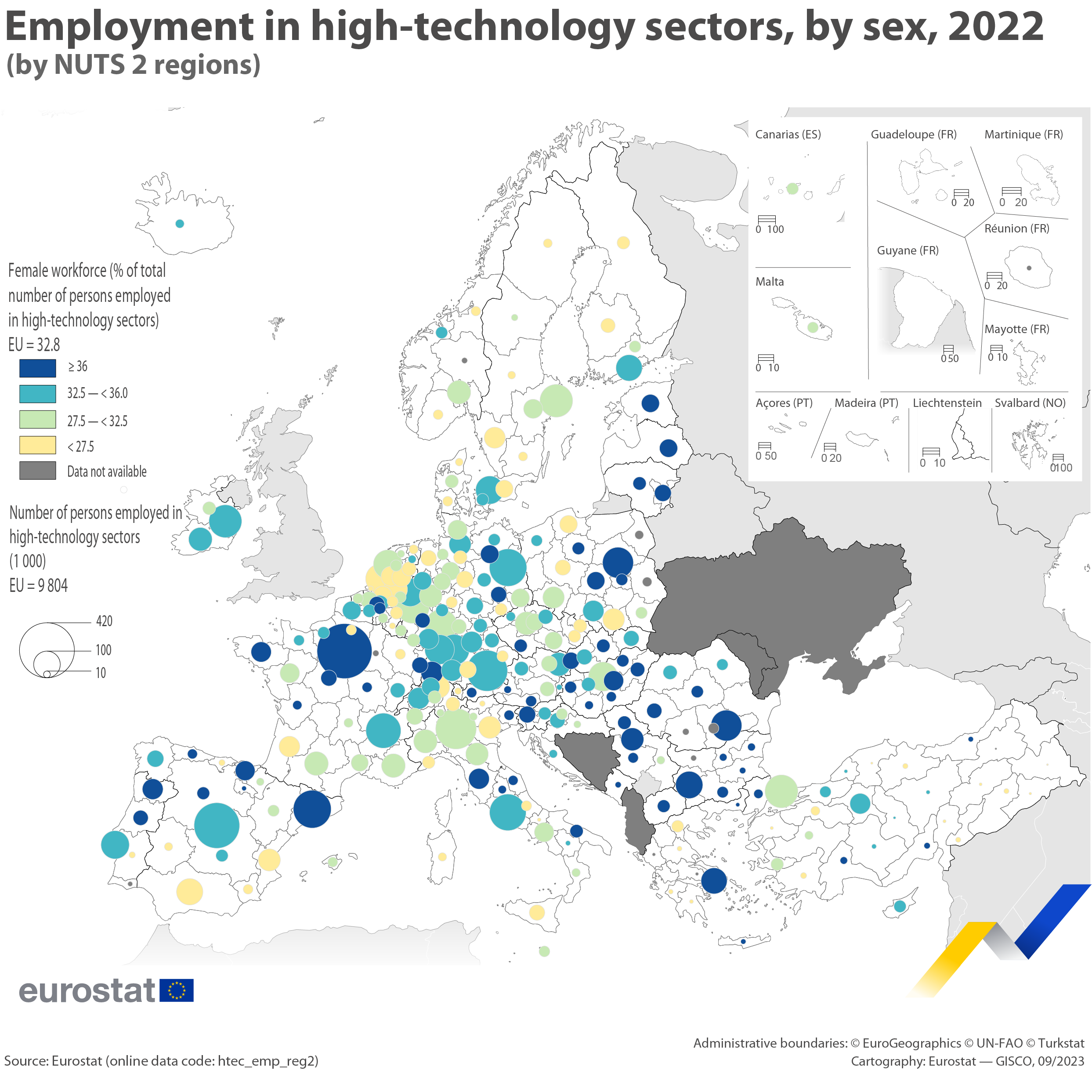High-technology sectors are considered key drivers of economic growth and productivity and often provide well-paid employment opportunities. In 2022, there were 9.8 million people employed in high-technology sectors across the EU, corresponding to 4.9% of the EU’s total employment. The gender representation in this sector sees men accounting for just over two-thirds (67.2%) of the total.
At the regional level (NUTS 2 regions), the French (Ile-de-France) and Spanish (Comunidad de Madrid) capital regions registered the highest number of people employed in high-technology sectors, 420 000 and 289 000, respectively. They were followed by 3 regions, which recorded more than 200,000 persons employed in high-technology sectors: Oberbayern in southern Germany, Lombardia in northern Italy, and Cataluña in eastern Spain.
At the bottom end of the distribution, there were 5 regions with less than 3,000 persons employed in high-technology sectors: the southern Italian region of Molise, together with four Greek regions – Anatoliki Makedonia, Thraki, Peloponnisos, Ipeiros, and Sterea Elláda.
Women accounted for almost one-third (32.8%) of the total number of people employed in the EU’s high-technology sectors in 2022.
The share of women in high-technology employment across NUTS 2 regions, ranged from a high of 50.2% in the Hungarian region of Nyugat-Dunántúl down to 8.3% in the Greek region of Thessalia. In fact, Nyugat-Dunántúl was the only region in the EU (at this level of detail) where there were more women than men employed in high-technology sectors. The next highest shares of female employment were recorded in the Italian region of Marche (48.6%) and another Hungarian region, Észak-Magyarország (48.1%).
Source dataset: htec_emp_reg2


